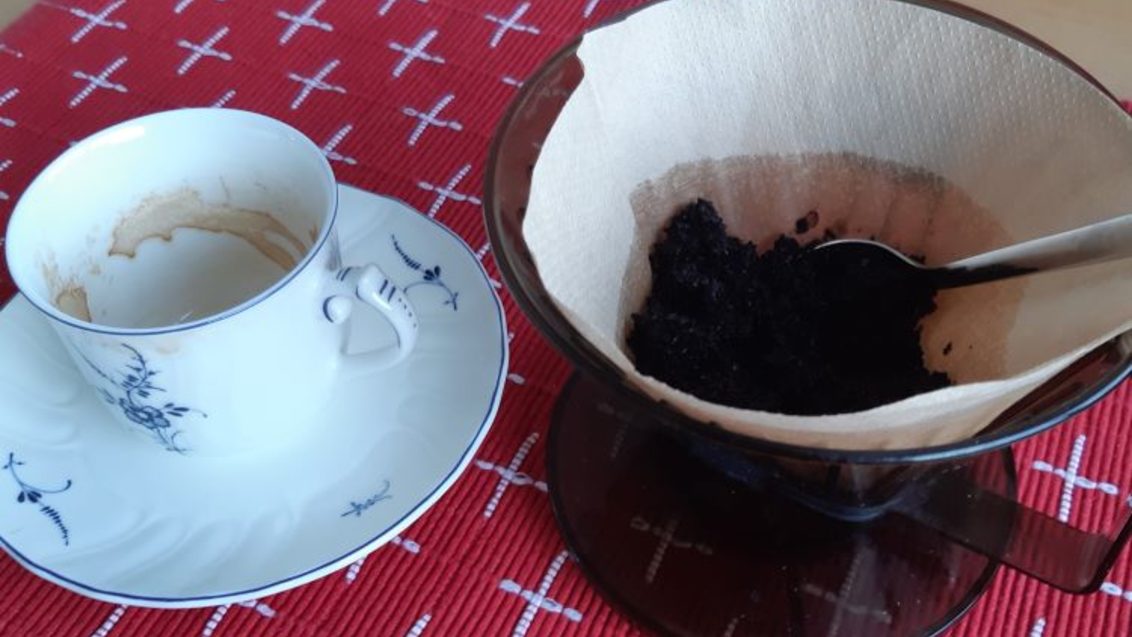If you read the coffee grounds scientifically...

(Das Gespräch haben wir auf Deutsch geführt)
Coffee, avocado and cashew have never shared such limelight: a recent study of the consequences of climate change for these three crops has generated an international media response. The study is based on calculations made with CONSUS, an agricultural planning tool developed with our support. In the first of two articles about this very important study, we talk to its lead author, Roman Grüter from Switzerland's ZHAW university.
Syngenta Foundation: How would you briefly summarize your findings?
Roman Grüter: Climate changes can influence which crops farmers will grow in the future, and where this cultivation will take place. We modelled these changes globally for coffee (Arabica), avocado and cashew. For all three crops we expect both negative and positive developments, depending on the region.
What will that mean in practice?
In the case of coffee, the current main growing regions, in particular, will primarily become less suitable. Cashew and avocado are not as susceptible. But here, too, we expect that important growing regions will be negatively affected. However, in addition to climate change, adaptation programs are also crucial for future production. These include, for example, new cultivation and selection techniques. It is very important that local farmers are involved in the change processes from the very beginning.
Your publication generated an enthusiastic media response. How did you deal with that? What does increased public attention mean for scientists in general?
The extent of the international media response was unexpected for us – and it also meant a lot of extra work! The many conversations and mails with science journalists from all over the world were – and still are – an exciting and fascinating experience. On the one hand, this feedback gives us the opportunity to highlight certain aspects of our own research and to reach a wider public. At the same time, critical feedback motivates us to explore some further topics.
Which ones in this case?
For example, there was a question about a longer time horizon. Another person would have liked to see Robusta coffee modelled, not just Arabica. For avocado, it was suggested we consider several different varieties. One reader observed that we should have included more than just the four most important growing countries per crop.
Which questions or comments on the study most surprised you?
We were chiefly amazed by the huge response, and particularly impressed by the detailed nature of the questions. The science journalists had evidently read the study meticulously. Seen across all media, the publications varied considerably. They ranged from highly scientific articles that discussed almost every detail to short lay press commentaries from the consumer's point of view. Some media interviewed other experts. Some combined the study results with relevant current stories, e.g. the challenges faced by Sicilians who have recently started growing avocado. One magazine downloaded our results from the data repository and used them to create graphics.
We were also surprised that coffee was the focus of many reports. Our findings on avocado and cashew arguably have greater “news” value. In connection with climate change, these two crops have so far been studied less than coffee.
That brings us back to the preparation of the study. What was the biggest challenge for your ZHAW team?
Combining and evaluating the modelling of three globally relevant crops. A detailed discussion of the results for every growing region affected is not possible in a single study. However, we wanted to evaluate our results in sufficient depth to provide relevant information to all the growing regions involved.
Whether globally or locally: involve smallholders from Day 1
If you were to extend the study to an additional three plants, what would they be and why?
We can't say yet. However, we are generally interested in various crops that contribute to plant-based, sustainable nutrition. This can be at regional or local level, taking into account the relevant context.
What is your vision for CONSUS? How can the results from this agricultural planning tool be implemented in practice?
Our results are particularly relevant to agricultural planning and consultancy, and to food aggregators and processors. They also serve as a basis for selection and the further development of other climate adaptation measures. Our team wants to emphasize again: it is imperative that experts involve smallholders in the necessary changes to their farming systems right from the start. This can be done, for example, through representatives of producer organizations and cooperatives.
What further developments are planned for CONSUS? Which partnerships are of interest for further development and applications?
We are interested in any kind of partnership, whether in research and practical applications or with companies, authorities and other foundations. The important thing is that we find common interests and directions geared to agroecology. This applies at the global, regional or local level. In addition to suitability modelling, we are also interested in the development of climate protection and adaptation measures, and the investigation of social science aspects.
You have been working for a long time not only with our Foundation, but also with many other partners. What makes a good partnership for academic researchers?
Mutual trust and the active pursuit of shared visions and ideas. In our case these are, for example, the promotion of smallholder agriculture and sustainable food systems according to agroecological principles. It is also essential that we can act independently as scientists, for example publishing the results of our research freely, regardless of outcome.
